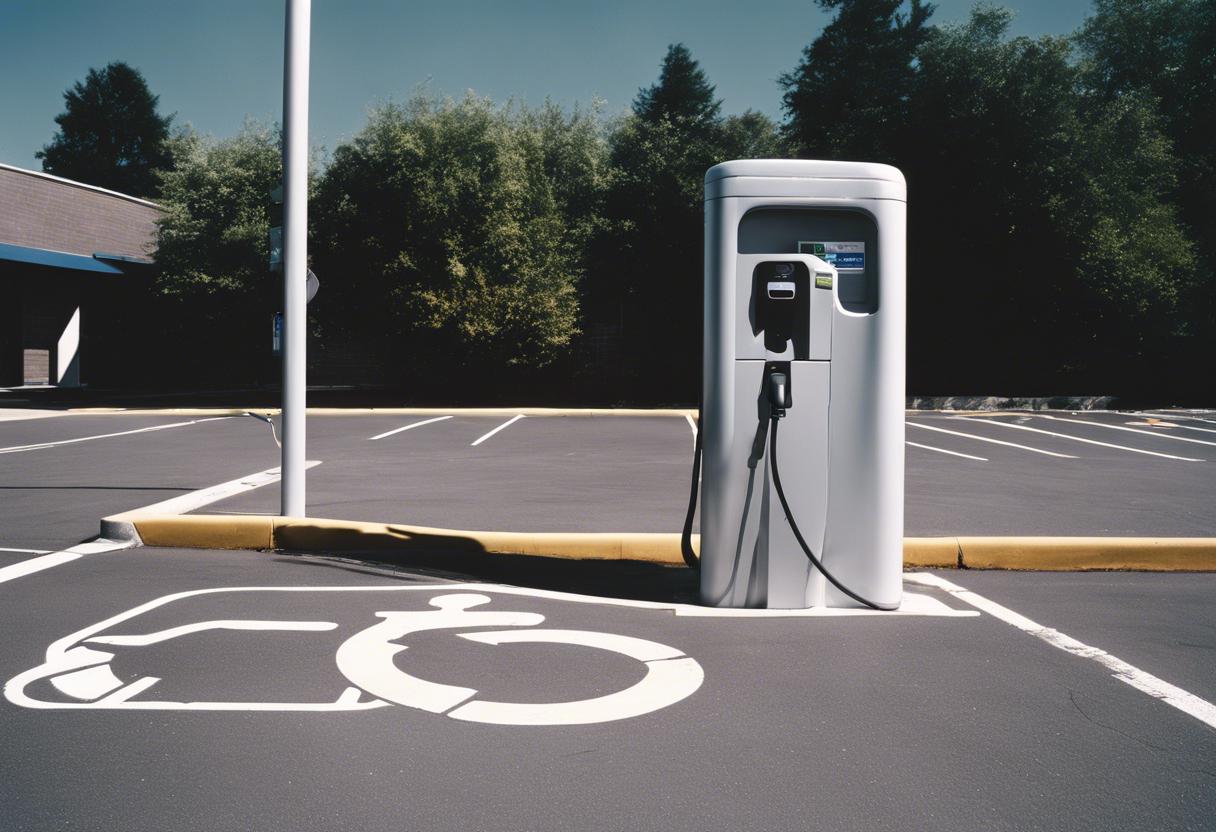Q: Are there any initiatives in place to ensure that electric vehicle charging stations are more wheelchair-accessible?
A: There’s certainly cause for concern. While standard EV charging stations on the streets are relatively accessible for wheelchair users or people with mobility issues, fast DC chargers often pose significant hurdles.
The standard design for European fast chargers, CCS charging cables, are burdensome and cumbersome, making it challenging for individuals to handle them whilst also manoeuvring their wheelchair. Even though these rapid charging bays typically have more space compared to ordinary parking spaces, the area can get crowded and difficult to navigate when multiple vehicles are charging simultaneously. Moreover, some rapid chargers are still positioned on high kerbs, creating further hindrances for wheelchair users.
A representative from Zevi told us: “In May 2024, Zevi issued the Universal Design Guidelines for EV Charging Infrastructure. According to Zevi, the public EV charging network should be universally accessible, and the guidelines are committed to making the infrastructure more usable for everyone. Important factors considered include the design of the station, accessibility of the location, and the provision of relevant information and communication before, during and after charging.”
However, this is not to promise that every connector will be accessible for every user. “The guidelines do encourage those who are involved in the establishment or maintenance of the EV charging system to adhere to the universal design principles, but they also acknowledge that there could be practical limitations in some cases.”
There are a few possible alternatives which, while not quite ripe for mainstream utilisation, offer a glimpse of the future. One such example is a charging robot that Volkswagen has conceptualized. This self-propelled charger can navigate to your vehicle and autonomously link a portable battery, hence replenishing your power reserves. This machine is particularly designed for narrow spaces like car parks, where it can wander around and recharge your vehicle as you handle other tasks. So far though, this remains largely a theoretical idea.
At the same time, Hyundai has been working on a robotic arm that’s capable of being connected to a swift charging point. This automated arm can attach and remove itself post-charge. Even though it is still in its conceptual stage, there exists a functioning prototype of this system. Other vehicle manufacturers have explored similar prototypes; however, they all remain at the prototype stage for now.
In the interim, there are more ready-to-go enhancements that could potentially facilitate the lives of wheelchair users and those grappling with mobility challenges. Some modern EVs come with built-in plug-and-charge systems. By merely connecting your charging cable to the car, the vehicle’s in-built software takes over automatically processing payment for the charging, eliminating the need for any back and forth movement to swipe RFID or debit cards. Reliability and simplicity in charging systems is paramount, as any feature that minimises the necessity to physically interact between the charger and car is most welcomed.

